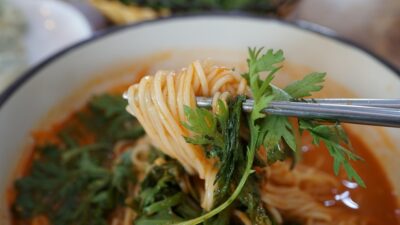In an increasingly interconnected world, culinary exploration has become a journey that transcends geography and culture. Each region offers its own unique spices, contributing to a rich tapestry of flavors that define cuisines. Join us as we embark on an aromatic adventure along the spice trail, uncovering the flavor profiles that make global dishes so spectacular.
The Power of Spice
Spices are more than just ingredients; they are carriers of history, tradition, and culture. Historically, spices were rare and valuable commodities that drove exploration and trade, shaping civilizations along the way. Today, they remain vital in transforming ordinary dishes into extraordinary culinary experiences. The flavors they impart can evoke memories, tell stories, and bring people together at the dinner table.
Regional Spice Profiles
1. Middle Eastern Magic
The Middle East is a palette of complex flavors characterized by the warm notes of cumin, coriander, and cardamom. Sumac, with its tangy brightness, and za’atar, an aromatic blend of herbs, lend depth to dishes like hummus and grilled meats. The region’s spices are often used to create harmonious balance, enhancing both sweet and savory dishes.
2. Indian Inspiration
India’s diverse regional cuisines boast an extensive array of spices, making it a spice-lover’s paradise. Turmeric and garam masala impart warmth and depth, while chilies add heat and complexity. The fragrant basmati rice, often infused with spices, completes a meal that is as visually stunning as it is flavorful. The use of spices is not only culinary; it is deeply intertwined with cultural practices and traditional medicine.
3. Southeast Asian Zest
Countries like Thailand and Vietnam showcase a vibrant flavor profile that balances sweet, sour, salty, and spicy elements. Lemongrass, kaffir lime, and galangal deliver fresh notes, while fish sauce and tamarind offer a savory punch. Curries bursting with coconut milk and spices create a signature richness, making each dish a delightful experience in complexity.
4. Latin American Heat
In Latin America, spices are integral to both indigenous and colonial cuisines. The bold flavors of chili peppers, whether it’s the heat of jalapeño or the smokiness of chipotle, dominate many dishes. Cumin and coriander give depth to tacos and stews, while the fresh zest of lime enhances the brightness of salsas. Each ingredient speaks to the region’s history, traditions, and agricultural bounty.
5. Mediterranean Heritage
Mediterranean cuisine is characterized by its fresh herbs and spices. Oregano, basil, and dill are staples, while spices like saffron add a luxurious touch to dishes. In countries like Greece and Italy, olive oil acts as a canvas for these flavors. The emphasis on simplicity, quality ingredients, and balanced seasoning is a hallmark of this culinary tradition.
Experiencing Spice
To truly appreciate the spices of the world, one must engage in the full sensory experience they offer. Here are some ways to deepen your understanding and enjoyment of global spices:
-
Cooking Classes: Immerse yourself in local cuisines through hands-on cooking classes. Learning to incorporate spices into traditional dishes enhances understanding and appreciation.
-
Farmers’ Markets: Visit markets to discover fresh, local herbs and spices. Engaging with local producers provides insights into their culinary practices.
-
Global Dining: Explore diverse restaurants that specialize in authentic international cuisine. Each dish tells a story, reflecting the chef’s cultural heritage and culinary creativity.
- Spice Blending: Experiment at home with spice blends to create your unique flavor profiles. Try mixing cumin and coriander for a Middle Eastern touch or pairing lime with chili for a Latin explosion.
Conclusion
The journey along the spice trail is an invitation to explore, savor, and celebrate the diverse flavors of our world. Each spice carries with it a narrative that speaks to the people and cultures that have shaped it over centuries. By embracing spices in our cooking and dining experiences, we not only enrich our meals but also connect with the stories and traditions of those who came before us. So, grab your spices, and let’s embark on this flavorful adventure together!



